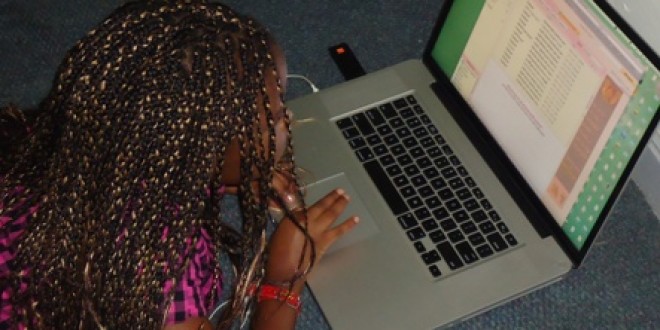By David Burrows (shropshirestar.com) and Dominic Casciani (BBC News)
Published March 7, 2010
Children are being increasingly exposed to sexual imagery, with parents finding it difficult to stop it.
Dr Linda Papadopoulos, a psychologist who conducted the study for the UK Home Office, says children are being damaged by exposure to sexual and violent images and lyrics on TV. It calls for music videos which are “sexually provocative” to be banned before the watershed and for age restrictions to be introduced on “lads’Â mags”.
Dr Papadopoulos says music videos are sexualising girls at a young age and encouraging them to aspire to an unhealthy ideal, but unlike other sexual content are not banned before 9pm.
As well as music videos, the report points to greater exposure of children to sexual and violent content from a younger age, through magazines, advertising, the internet and video games.
The report says: “Music channels and videos across all genres have been found to sexualise and objectify women. Women are often shown in provocative and revealing clothing and are depicted as being in a state of sexual readiness. Males on the other hand are shown as hyper-masculine and sexually dominant.”
Dr Papadopoulos adds that children and young people are not only exposed to increasing amounts of hyper-sexualised images, they are also sold the idea that they have to look “sexy” and “hot”.
The report says magazines aimed at young men also contribute to the problem.
“Lads’ mags contain a high degree of highly sexualised images of women that blur the lines between pornography and mainstream media,” she says. “The predominant message for boys is to be sexually dominant and to objectify the female body.”
Dr Papadopoulos Says there is a clear link between sexualised imagery and violence towards females.
Exposure to sex and violence at a young age can lead to low self esteem, unhappiness with their looks and unhealthy sexual aspirations among young girls, the report says. Boys, on the other hand, are encouraged to aspire to a false “hyper-masculine” ideal.
The material children are being exposed to include the growth of lads’ mags and pornography on mobile phones, through to big-name fashion brands using sexual imagery to advertise clothes targeted at young teenagers.
The report says this “drip-drip” exposure is distorting young people’s perceptions of themselves, encouraging boys to become fixated on being macho and dominant, while girls in turn are presenting themselves as sexually available and permissive.
RELATED: A Somali Symphony
One outcome, the study says, has been the rise of sexual bullying in which girls feel compelled to post topless or naked pictures on social networks.
Both the images we consume and the way we consume them are lending credence to the idea that women are there to be used and that men are there to use them
“Unless sexualisation is accepted as harmful, we will miss an important opportunity; to broaden young people’s beliefs about where their values lie,” says Dr Papadopoulos.
Calling for tougher regulation of sexual imagery in adverts and a ban on selling “lads’ mags” to under-16s, the report recommends selling mobile phones and games consoles with parental controls automatically switched on.
The report’s 36 recommendations include calling for games consoles, mobile phones and some computers to be sold with parental controls already switched on.
This would allow families to automatically filter which on-demand services and online material their children can use.
RELATED: New Addictive Drug Threatens the Future of South African Youth
Other recommendations include:
-A ban on “sexualised” music videos before the TV watershed
-A ban on Jobcentres advertising positions in lap-dancing clubs and massage parlours
-Internet service providers to block access to pro-bulimia and pro-anorexia websites
-The creation of a website where parents can report any “irresponsible marketing” they believe sexualises young children.
Dr Papadopoulos says there should also be symbols to show when a published photograph had been digitally altered – such as pictures of celebrities manipulated to make them appear thinner.
She also recommends giving the Advertising Standards Authority the power to act against sexualised imagery appearing within commercial websites, such as provocative photo-shoots used by clothing chains targeting teenagers.
Dr Papadopoulos says: “The evidence gathered in the review suggests a clear link between consumption of sexualised images, tendency to view women as objects and the acceptance of aggressive attitudes and behaviour as the norm.
Noting the report is excellent, Sue Berelowitz, Deputy Children’s Commissioner for England, nevertheless says responsibility lies not with the media but parents.
RELATED: Lola Kenya Screen 2013 Calls for Participation
“Parents need to be stepping in and taking control, they need to be imposing good boundaries, they need to know what their children are watching, people need to be really careful about children having private access to the internet in their bedrooms.”
Frank Furedi, a professor of sociology at Kent University, says society as a whole and adults are to blame: “The whole of society is hypersexualised – sex becomes the common currency through which adults make their way in the world and continually send a signal to children that sex is all that matters. One of the big problems that we are faced with is that increasingly adults have lost the capacity to draw a line between their own attitudes and those of children and increasingly we’re recycling adult attitudes about sex through the prism of children.”




